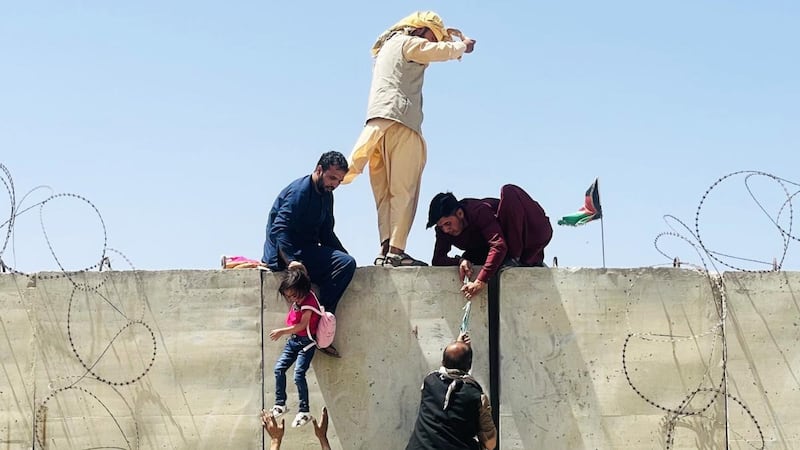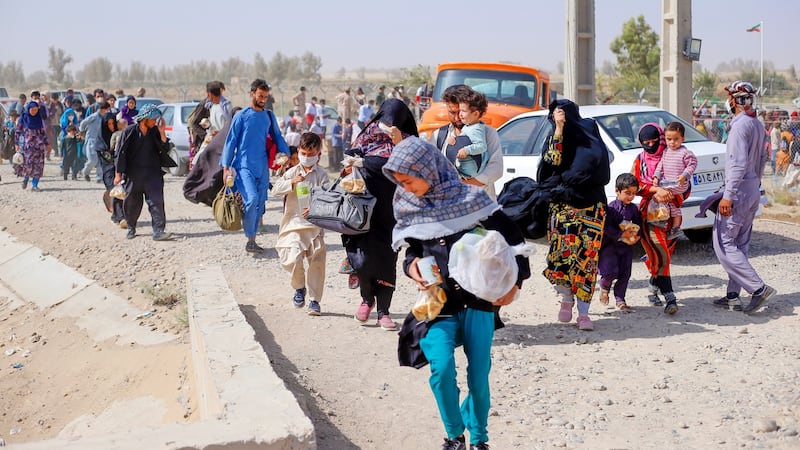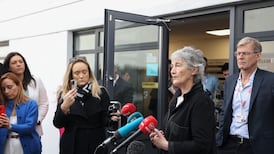On Sunday, August 15th, 2021, as Taliban troops started to enter Kabul, the Afghan president, Ashraf Ghani, resigned and headed for the airport. The 20-year experiment in internationally supported democratic republican rule in Afghanistan was over. In that moment, the dreams of millions of Afghans whose futures and livelihoods were tied to their country's republican order vanished. It is hard to communicate just how profound are the changes implied by the return of the Taliban to power and how acute the shock experienced by Afghans who are still trying to come to terms.
As events were unfolding, I spoke to a Kabul University teacher, who had helped me document massacres conducted by the Taliban the last time they were in power in the 1990s. Tears rolled down his face as he said, "I cannot believe that 20 years of effort to instil the values of a civilised society can end in the return of these brutes."
He had survived the first Taliban regime, running the gauntlet of their whips. Under the Republic he had got his doctorate, become a professor, taught a generation of students – Afghanistan’s future – and was prominent in public debates. Now he simply cannot bear the thought of the return to the constant fear of being locked up for trivial infringements of the Taliban’s moral code, or of being labelled a dissident and disappeared. He is desperate to get out.
The Taliban drive into Kabul last Sunday unambiguously marks the return of authoritarian rule by a militant Islamist movement, run by men who have topped international terrorist lists. They are committed to sweeping away the last vestiges of democratic institutions and values which their compatriots tried to build up over two decades. The Taliban have declared this as a victory over the United States, which in many ways it is. But the march into Kabul also marks the latest stage in the attempt by a tiny faction within Afghan society to impose its will on the population at large. The United States has withdrawn from the conflict. But Afghans cannot withdraw. They are locked into this struggle. Alas, for them, the Taliban victory in Kabul heralds the start of a new phase of the country's long war.
The debacle in Afghanistan is a result of bad policy, not bad intelligence
Many people have been astounded by the speed of the Taliban takeover and asked if there had been a western intelligence failure. But the debacle in Afghanistan is a result of bad policy, not bad intelligence. The most disastrous policy has been the so-called peace process, launched by the Trump administration in September 2018 and continued by the Biden administration. This process was fundamentally flawed. Instead of bringing peace, it enabled the Taliban victory through an approach of appeasement.
Apologists for the initiative, headed up by ambassador Zalmay Khalilzad claimed there was no alternative to their approach of exchanging a US withdrawal timetable for a Taliban promise to negotiate with the government. They were wrong.
The alternative was to prepare the Afghan Republic’s armed forces and political leaders for a period of resistance after US withdrawal. The hope would have been that, when the Taliban failed to take over by force, they would have to take negotiations more seriously than they did on Khalilzad’s watch.
I recently conducted a review of the US-led Afghan peace process, which concluded that the Taliban leadership had never been seriously interested in sincerely negotiating or reaching agreement with the government in Kabul. In talks in Qatar, the movement basically strung the US along, extracting concessions while giving nothing meaningful in return. Among those men who marched into Kabul on Sunday were fighters, who had been among the 5,000 Taliban freed from jail last year, under a supposed confidence-building measure foisted on the Afghan government by US envoy Khalilzad.
On February 29th, 2020, the US signed an agreement with the Taliban which provided for a full US and international troop withdrawal on a tight 15-month timetable. The agreement was supposedly conditional, as the Taliban promised to take measures to restrict the activities of other terrorist groups and to negotiate a ceasefire and a political settlement with the government side.
But throughout the Khalilzad peace process, the Taliban leadership’s strategic intent was to grab power by force and re-establish its Islamic Emirate with a complete monopoly of power.
All the TV coverage which people around the world saw of bearded Taliban representatives showing up for talks and claiming that the movement was reformed and ready to respect citizens’ rights was just for show. This was the Taliban strategic communications exercise, to pose as a legitimate political movement and encourage complacency towards their military campaign.
Analysts warned US policy makers that the Taliban leadership never prepared their base to embrace a compromise deal, the way that other insurgent movements have done in the run-up to a peace agreement. But the US continued to tell both their Afghan partners and western allies that the Taliban had embraced the idea of a power-sharing arrangement and peaceful transition. Alas, this was always an illusion.
Even US officials were amazed at what happened. When they saw their government signing a conditional withdrawal deal, they assumed the US would call out the Taliban for breaches of the agreement, thus delaying the withdrawal and allowing for more pressure on the Taliban to opt for a settlement. Instead, the US failed to respond to the Taliban breaches and increasingly obvious determination to pursue the military option. It is clear that the US wanted to use the illusion of a political process to provide some political cover for extricating itself from Afghanistan. But, by persuading its Afghan and international allies to focus all energy on the doomed peace talks and promise of a settlement, the US fatally diverted energy away from preparations for the post-withdrawal Taliban offensive.
The US talked up the prospects of a political settlement and the hopes that it would hand over to a power-sharing administration including the Taliban. But throughout the 2018-2021 peace initiative, the Taliban leadership gave their fighters an entirely different narrative. Unambiguously, it was a victory narrative. Taliban fighters were told that they had defeated the United States in the war and that the US had agreed to hand over power to them as they left – “the Americans have handed us the keys of the presidential palace” was a frequently repeated phrase.

Of course, there was no such deal. But Taliban propagandists and military commanders used the victory narrative to motivate their fighters ahead of the final offensive and to persuade government forces that they were doomed. But it was not just through prisoner releases, distraction and undermining morale that the US enabled the Taliban victory. Critically, the 2020 deal between the US and Taliban severely curtailed the use of American air power against the Taliban, although the Taliban were able to fight on against the Afghan government.
To a large extent, the US quit the battlefield more than a year before their troops actually left. In the last year of the mission, when the US should have been building the resilience of Afghan forces, it largely withdrew the key military advantage which Afghan forces had enjoyed over the Taliban. This decision meant that already in 2020 the Taliban enjoyed full freedom of movement across the country and started to build up the military pressure.
The key point of all of this is that the US used a peace process, which was always unlikely to deliver, as an excuse for pushing ahead with its rapid troop withdrawal and eventually persuading Nato to join it in the rush to the exit. And, despite the massive investment in the Afghan security forces, the US took the opposite approach to the Soviets at the time of their 1989 withdrawal. The Soviets tried hard to leave their Afghan counterparts in a position to defend the country. In effect, in the final stages of its operation in Afghanistan the US helped fatally to weaken the Afghan security forces.
The Taliban brilliantly exploited flaws within the Afghan government's approach and the weak co-operation between the Afghan government and the US
The Taliban launched their final offensive in mid-May, after the Eid holiday. This was a well-organised and funded offensive, which built upon the assiduous work of the movement’s propagandists. It also brilliantly exploited flaws within the Afghan government’s approach and the weak co-operation between the Afghan government and the US.
The Taliban started by targeting the headquarters of government-held administrative districts. These 400 districts are the foundation of state power in the country. Initially the Taliban had to concentrate their forces and fight for control of districts. In places like Qaisar, Daulatabad and Shirin Tagab in northern Faryab province, men really did fight until the end. That meant police officers and auxiliaries conducting last stands until suicide bombers blasted their way through police station perimeter walls. Let no one say that Afghan forces did not resist.
But there was a critical failure of Afghan leadership of the security forces. Incredibly, Afghanistan operated for most of the past two years with a defence minister who was off sick. A chief of army staff had to stand in for him before being replaced by someone even less competent during the offensive.
The national security adviser was relatively inexperienced but passed on the president’s micro-managing instructions to the armed forces. To cap it all, the head of the administrative affairs division which makes all appointments, was deeply corrupt and, despite the crisis, continued to demand bribes for command appointments, which disastrously weakened the officer corps. Competent officers were simply excluded from some of the most important posts and many units were under-manned, to enable the commanders to divert salary and ration payments.

With such chaos in the top leadership of the Afghan security forces, it is hardly surprising that Afghanistan did not have an effective strategy to combat the Taliban offensive. The departing top US general, Scott Miller, had advised the Afghan government, in advance of the Taliban offensive, to conduct triage. The idea was that the government should withdraw its forces from indefensible districts and concentrate on holding the rest, which would still have given a viable position. But the government was simply not prepared to concede these positions in advance. This turned out to be one of the fatal errors. While the Taliban had to fight for places like Qaisar and Daulatabad, thereafter the offensive turned into a rout. The Taliban pressured tribal elders to approach the government teams in the districts and offer them terms of surrender. By June, the victory narrative concocted by the Taliban propagandists seemed increasingly plausible. In those circumstances, when administrators or army commanders were offered amnesty in return for retreat or surrender, they became easily persuadable.
There was one point at which it seemed as if the Afghan government might be prepared to overhaul the security leadership sufficiently to reverse the collapse. On June 19th the president announced that he had appointed Bismillah Khan as defence minister. Bismillah Khan is an experienced commander, a veteran of Ahmad Shah Masood’s resistance to the Taliban and has previously held most top security positions.
When he took over, the Afghan government still held all the 34 provincial centres and the army was largely intact, as units had pulled back to main bases. But he was never really empowered or resourced and, despite a few bombing raids called in by the US, did not receive adequate air support. Bismillah Khan was given an impossible task. Again, the failure through July and August was mainly about politics and leadership, rather than true battlefield defeats.
In June and July, most Afghans living in areas controlled by the Republic were appalled at the Taliban advance and wanted to resist, knowing full well that the Taliban threatened their freedom and their very survival.
The old strongmen of the previous campaigns against the Taliban, such as Abdul Rasheed Dostam, Atta Nur, Kareem Khalili, Mohammad Mohaqiq, all volunteered to rally their supporters to the defence of the Republic. But a military campaign is impossible without supplies. The government asked them to help but failed to deliver arms, ammunition, money and authority or co-ordination structures which they would have required to conduct a full-scale mobilisation.
June and July was the time for a show of national unity as fear of the Taliban was a powerful common interest binding all the old faction leaders to Ashraf Ghani’s government. In Afghanistan, in a crisis like this, normally the government would announce a National Motherland Front and try to rally people around the flag. But the president chose to double-down on his incredibly small inner circle – the triumvirate of himself plus the national security adviser and the head of administrative affairs.

Bizarrely the president himself held meetings with the old power brokers and made one last flight to the key northern city of Mazar e Sherif, supposedly to urge the leaders there to stand firm. In Mazar, the strong men had mobilised men. But given that the defence minister had been given no authority, they expected the president to give them the supplies their men needed. They complained bitterly that the president did not even promise them enough ammunition to fill a magazine for each man on the front line. The US had already given up hope of being able to work with the Afghan government to prop up the defences.
By August, many of Afghanistan’s leading figures had reached the same conclusion. That is why the final collapse came so quickly. The Taliban propagandists’ victory narrative became a self-fulfilling prophecy. With no sign of any meaningful response from the US or their own government, it is unsurprising that, by August, thousands in the Afghan military chose to stand aside rather than fight for a lost cause.
When Mazar e Sherif fell at the weekend, this was the point of no return. An Afghan government which held Mazar e Sherif in the north and Jalalabad in the east, giving it borders to the north and east, could plausibly have held on. With Mazar gone, the only question was how long Kabul could be defended to provide time to negotiate terms.
However, in one of the most controversial moves of the whole collapse, on Sunday, president Ghani received word that the Taliban were at the gates of the city and it was time to go. He resigned and headed for his flight into exile, with no transitional arrangement in place. This set the scene for the chaotic scenes at the airport which the world has gazed at aghast over the past week.
The Taliban have just grabbed power by force of arms and imposed the rule of a tiny, extremist majority. This is not a sustainable situation
About the most confident statement one can make about Afghanistan now is that the Afghan war is not over. The US has extricated itself, but in such a way that guarantees the conflict will continue, with spill-over effects for the region, as well as immense damage to the US reputation and influence.
Despite the illusions encouraged by the US, and Taliban propagandists, that the Taliban have moderated and are open to an inclusive government, the Taliban have just grabbed power by force of arms and imposed the rule of a tiny, extremist majority. This is not a sustainable situation.
Already resistance has begun, both armed and civic. Erstwhile first vice-president Amrullah Saleh has retreated to his native Panjsher Valley with a fleet of helicopters and declared himself the rightful interim president. Afghans on the ground have told me that the arrogance shown by Taliban fighters to the population in areas they have newly conquered guarantees that such resistance will grow. The imposition of an authoritarian Islamist regime in Afghanistan is a massive blow for the US. Rather than ending the war, this development marks the opening of a new chapter.
Michael Semple is a professor at Queen’s University Belfast’s Mitchell Institute for Global Peace, Security and Justice and former deputy EU Envoy to Afghanistan. He is a global expert on the Taliban movement and conflict resolution in Afghanistan and Pakistan. He lived in the region for more than 30 years.




















